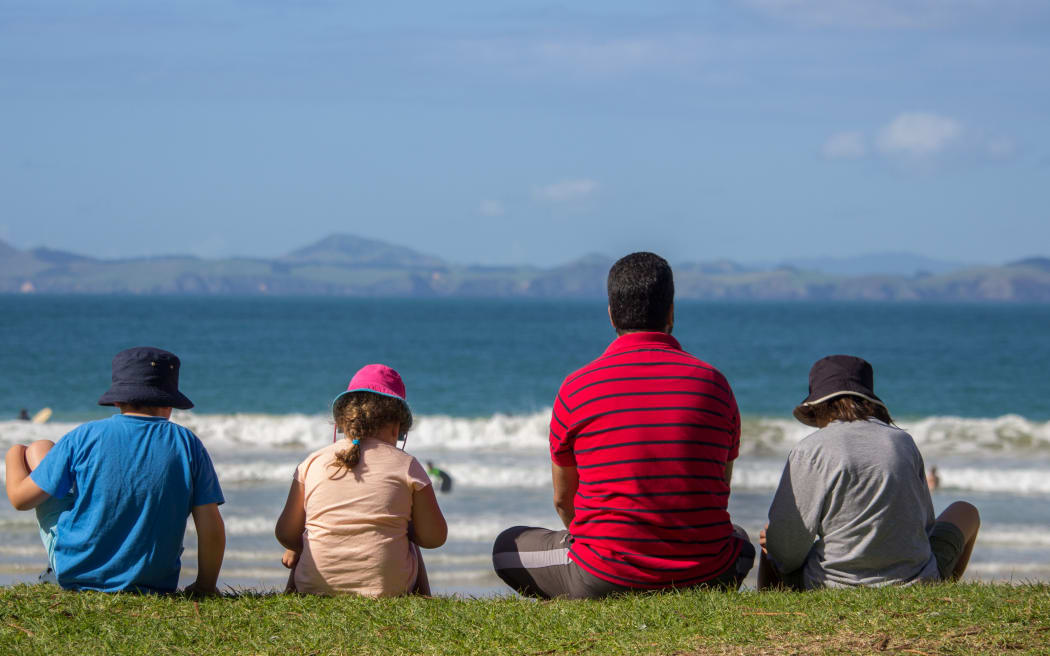A new report has warned that another severe marine heatwave is on the horizon - and as The Detail finds out, as these sort of events become more frequent, the consequences for the environment, and the economy, could be dire.

Photo: 123RF
Slowly but surely, the sea is warming.
And maybe this sounds like good news if you're a beach-lover or an ocean swimmer. But the more detrimental effects of shifting sea temperatures are starting to show themselves.
Earlier this year, we caught a hint of the devastation when millions of Fiordland native sea sponges were found to have been bleached bone white in the wake of a marine heatwave, the largest event of its kind reported anywhere in the world.
Now, a new report from the Ministry for the Environment lays out the threat posed by marine heatwaves in plain terms - existential, economic and cultural.
"It's quite confronting when you see some of the projections of ocean temperature for the coming century," says University of Otago marine scientist Rob Smith.
"But knowledge is power, and knowing what is coming up gives us as scientists and communities around New Zealand a chance to respond positively to that."
The report says marine heatwaves are becoming both more common and more severe.
Smith says a heatwave is defined as when the ocean temperature at a given location sits at the top ten percent of temperatures typically recorded during that time of year for five days or more. Heatwaves can last for several months and stretch over thousands of kilometres of ocean.
"This is more than a nice warm day at the beach."
On a local scale, a build up of heat from ocean currents, the warming of the ocean's surface from the atmosphere, and reduced wind speeds inhibiting the mixing of cooler waters towards the ocean surface can all cause marine heatwaves.
But Smith says on a national scale, heatwaves are also caused by extreme weather events - the likes of which are becoming more common as climate change progresses.
While it's normal for the ocean's temperature to change from season to season and location to location - the waters off the South Island in October might sit at around 13 degrees, whereas the upper North Island would be 18; waters around Papua New Guinea could easily hit 30 degrees - marine heatwaves represent dramatic changes that can disrupt and harm local ecosystems.
"They can trigger widespread die-offs of marine species. That can come about through factors including marine heatwaves pushing species above their thermal tolerance, or through reducing their food availability or quality.
"The marine species that are impacted can include everything from marine vegetation - kelp forests, coral, sea grass meadows - through to shellfish, fish and seabirds, and also marine mammals."
Deaths, disease and population migration from heatwaves can also lead to knock-on disruptions in the economic sphere where supply chains and local economies rely on sea life.
Amber Allott, an environment reporter at The Press, tells The Detail about a marine heatwave last year that killed 40 percent of farmed salmon in the Marlborough Sounds, leading to a $73 million loss and over 100 staff being laid off.
That's 1300 tons of dead fish.
"That's a huge blow to a massively valuable industry," says Allott.
She says coastal tourism towns like Kaikōura stand to suffer seriously from the impact of marine heatwaves, where a significant portion of the workforce rely on holidaymakers coming and paying to see whales - sightings of which may become more rare if the seas around New Zealand continue to heat up.
"Their livelihoods and those of the wider community are connected to this balance in the seas."
Find out how to listen and subscribe to The Detail here.
You can also stay up-to-date by liking us on Facebook or following us on Twitter.

Photo:


